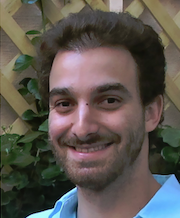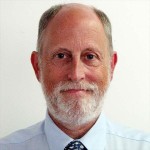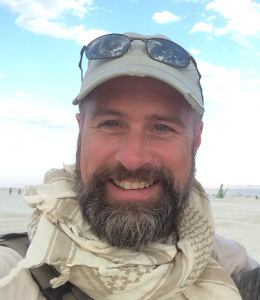Index of GHTC 2014 Featured Speakers
Click on the speaker’s name to view their information.
| Speaker | Organization | Topic |
|---|---|---|
| KEYNOTES | ||
Anil K Gupta | Indian Institute of Management and Honey Bee Network | Empathetic innovations for closing the social technological gap |
Camille Crittenden | UC Berkeley - Center for Information Technology Research in the Interest of Society (CITRIS) | IT Innovations for Human Rights, Civic Engagement and Humanitarian Development |
Meg Wirth and Allyson Cote | Maternova | The Lifecycle of Innovations and Technologies for Empowering Women & Girls Worldwide |
| PLENARY | ||
Anh Bui | Benetech | Empowering Good People to Do Good: Unlocking Tech-For-Good Innovation |
Bradley Younggren | Mobisante | Ultrasound Everywhere |
Brent Moellenberg | We Care Solar | We Care Solar: Bringing the First 100 Watts to Last Mile Health Centers |
Donna Baranski-Walker | Rebuilding Alliance | Technology, Gaza, and Perception: a Human Response to Human Suffering |
Iana Aranda | ASME, E4C, EWB-USA NY | Trends in Engineering for Global Development |
John A. McKnight | Salvation Army | From Crab Pots to Micro Chips: How Technology Has Been Applied To Humanitarian and Disaster Relief through the Last Century |
Khanjan Mehta | Pennsylvania State University, School of Engineering Design, Technology & Professional Programs (SEDTAPP) | From Humanitarian Engagement to Sustainable Impact |
Laura Stachel | We Care Solar and UC Berkeley (Blum Center for Developing Economies) | We Care Solar: Bringing the First 100 Watts to Last Mile Health Centers |
Luke Filose | Intel Corporate Social Responsibility, Education Service Corps | Humanitarian Inc.? Exploring the Corporate Role in International Development Projects |
Maha Elgenaidi | Islamic Networks Group | Technology, Gaza, and Perception: a Human Response to Human Suffering |
J. Roberto de Marca | 2014 IEEE President & CEO | Opening Remarks |
Steve Hipskind | NASA Ames Research Center | How the View from Space Improves Life on Earth |
| INVITED | ||
Bülent Bicer | Arizona State University, College of Technology and Innovation | VOCTEC: A sustainable capacity building initiative for renewable energy technologies |
Eric Rasmussen | Infinitum Humanitarian Systems and Singularity University | System Design in Disaster Response: Providing Clean Water and Restarting Communications |
John Coonrod | The Hunger Project | Smart Villages: Resilience, Gender and Decentralization |
John Crowley | Harvard Humanitarian Initiative | Making Crisis Legible: Opening Data across the Disaster Cycle |
Laura Jacob | Palantir Technologies Inc. and IEEE Society on Social Implications of Technology (SSIT) | Grameen + Palantir = Data Driven Agriculture |
Lisha Sterling | Geeks Without Bounds | Beyond the hackathon: accelerating open source projects toward sustainability. |
Mario Aleman | Universidad Nacional de Ingenieria and IEEE SIGHT Nicaragua | Prototyping Appropriate Medical Technologies for Quality Community Health Services |
Muhammad H. Zaman | Boston University, Department of Biomedical Engineering | Saving Lives by Improving Global Medicine Quality: Microfluidics meets Quality Control |
Ray Larsen | IEEE Community Service Initiatives | The Humanitarian Technology Sustainability Challenge |
Scott Bornheimer | Becton-Dickinson Biosciences | Point of Care CD4 Testing for HIV/AIDS Patient Management: the BD FACSPresto™ |
| X-TRACK | ||
Devin Balkind | Sarapis | Emergent Response: How humanitarian organizations and grassroots networks can collaborate on disasters response and recovery work |
Raj Madhavan | UMD and IEEE SIGHT, IEEE Robotics and Automation Society (RAS) | Humanitarian Robotics and Automation Technology Challenges |
Ravindra Joshi | IEEE Delhi Section HTC | Inculcating Mass Awareness on Environmental Issues |
Tapan Parikh | University of California, Berkeley | Representation Technologies |
Vineeth Vijayaraghavan | Solarillion Foundation | Role of Rural Microgrids in Alleviating Energy Poverty |
Yasunori Kimura | Fujitsu Laboratories of America | Human-centric Health: Empowering People with 24/7 Personalized Monitoring |
| WORKSHOP | ||
Azmat Malik | Acuventures | Social Entrepreneurship |
Catherine Blackadar Nelson | Intel Corporation | Effective Presentations for a Global Audience |
Jennifer Stewart | IEEE | Finding the Funding: Leveraging internal and external resources to fund your program or meeting. |
| DEMONSTRATION | ||
Ken Dueker | Office of emergency Services, City of Palo Alto | State of the Art Mobile Communications: Mobile Emergency Operations Center (MEOC) |
Anh Bui
Director, Product Strategy for Global Literacy, Benetech
Title: Empowering Good People to Do Good: Unlocking Tech-For-Good Innovation
Abstract:
Standard for-profit approaches do not typically address the needs of disadvantaged populations because they don’t represent a big enough market—or because the risk profile makes them an unattractive investment based on the expected returns. Consequently, the benefits of technology only reach the richest 1% or 5% of the globe’s population. So how do we harness the power of technology for positive social impact? Join Anh Bui, Director of Product Strategy at Benetech, a nonprofit technology company that develops software applications to address pressing social needs. Anh will discuss how Benetech uses technology to ignite communities and advance innovative solutions, serving some of the world’s most vulnerable populations. Additionally, learn about Benetech’s deep commitment to social impact and how it leverages talent from the nonprofit, corporate, and open source technology sectors.
Bio:
 Anh Bui is Director of Product Strategy at Benetech, where she leads the development and implementation of overall product strategy in Benetech’s Global Literacy Program. Anh heads the product management team behind Bookshare, the world’s largest online accessible library, as well as a broad portfolio of services and tools dedicated to improving access to books, educational materials, and other digital information to people with disabilities, such as visual impairment or learning disabilities. As head of the DIAGRAM Center—a research and development center focused on accessible digital images—she has helped forge the world’s foremost community of experts in the space, as well as establish a critical resource for technologists, publishers, educators, and end-users alike. Before joining Benetech in 2012, Anh served as the Associate Director of Product Management at HighWire Press, a division of the Stanford University Libraries that provides technology for publishers of leading peer-reviewed journals and other scholarly content. She holds a PhD from U.C. Berkeley, where she also led the development of the first digital scholarly editions of Mark Twain’s writings, and was deeply involved in digital library initiatives and the emerging technologies of digital humanities.
Anh Bui is Director of Product Strategy at Benetech, where she leads the development and implementation of overall product strategy in Benetech’s Global Literacy Program. Anh heads the product management team behind Bookshare, the world’s largest online accessible library, as well as a broad portfolio of services and tools dedicated to improving access to books, educational materials, and other digital information to people with disabilities, such as visual impairment or learning disabilities. As head of the DIAGRAM Center—a research and development center focused on accessible digital images—she has helped forge the world’s foremost community of experts in the space, as well as establish a critical resource for technologists, publishers, educators, and end-users alike. Before joining Benetech in 2012, Anh served as the Associate Director of Product Management at HighWire Press, a division of the Stanford University Libraries that provides technology for publishers of leading peer-reviewed journals and other scholarly content. She holds a PhD from U.C. Berkeley, where she also led the development of the first digital scholarly editions of Mark Twain’s writings, and was deeply involved in digital library initiatives and the emerging technologies of digital humanities.
Anil Gupta
Indian Institute of Management and Honey Bee Network
Title: Empathetic innovations for closing the social technological gap
Abstract:
Empathetic innovations for closing the social technological gap: Honey Bee Network Model – Inclusion of bypassed spaces, sectors, skills and social segments in developmental agenda has rightly engaged the attention of world technology leaders. But this inclusion in the true sense, may not happen unless we begin to learn from grassroots innovators and communities and blend formal and informal S & T systems. This has been the mission pursued by The Honey Bee Network, a social movement for the last twenty five years. The heuristics of sustainable frugal innovation will not emerge from a jugaad (makeshift) mentality. These will require an empathetic understanding of affordability, accessibility, availability, rejuvenability, durability and circularity of products and services. Designing new solutions by building upon artifactual, metaphorical, heuristic and gestalt aspects of innovation will fertilise our imagination, enrich scientific inquiry and result in reciprocal, responsive, and responsible relationship with knowledge rich- economically poor, creative communities.
I will include reference to innovations by children, tech youth, common people and other individuals in creating a truly national and international inclusive innovation eco-systems. I will also argue how professional societies like IEEE strengthen the linkage between formal and informal science and technology system to humanize the technological development processes.
Bio:
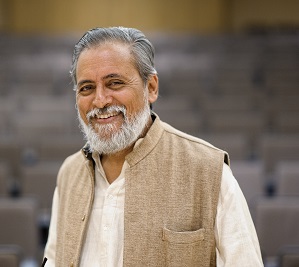 Anil K. Gupta is Professor at the Indian Institute of Management, Vastrapur, Ahmedabad; Coordinator of the SRISTI (Society for Research and Initiatives for Sustainable Technologies and Institutions); Founder of the Honey Bee Network and Executive Vice Chair of the National Innovation Foundation.
Anil K. Gupta is Professor at the Indian Institute of Management, Vastrapur, Ahmedabad; Coordinator of the SRISTI (Society for Research and Initiatives for Sustainable Technologies and Institutions); Founder of the Honey Bee Network and Executive Vice Chair of the National Innovation Foundation.
His Research and Action Interests include: expanding global, national and local space for grassroots inventors and innovators to ensure recognition, respect and reward for them; blending excellence in formal and informal science; linking innovations, investments and enterprise; creating Knowledge Network at different levels for augmenting grassroots green innovations and technological innovations by youth to build a global value chain to get the creativity its due; support to Honey Bee Network including about 185,000 ideas, innovations and examples (not all unique) of traditional knowledge from various parts of the country ( nifindia.org) and rest of the world on farm and non-farm sustainable technologies, and 200,000 projects of engineering and related disciplines through www.techpedia.in of sristi.org
His Mission is to demonstrate the potential of knowledge rich economically poor people in taking developing societies/emerging economies out of the morass of mediocrity and move these on to a path of sustainable, democratic and diversified progress.
Anil has been walking (around 6000 kms across India) for a week or more every summer, and winter for last 17 years as a part of Shodhyatra (journey on foot) to celebrate creativity at grassroots, to learn from grassroots teachers and share creativity of communities encountered so far.
He is a Member of the National Innovation Council, chaired by Adviser to Prime Minister; Fellow of the National Academy of Agricultural Sciences and Fellow of the The World Academy of Art and Science, California 2001. He has a Ph.D. in Management, M.Sc. in Genetics, and B.Sc. Agriculture.
Azmat Mailik
President, Acuventures
Title: Business Skills for Startups to Change the World
Abstract:
In this session we will cover the why’s and how’s of social ventures from the perspective of founder with little business training or experience. We will discuss a broad range of topics related to the formation, planning, funding, marketing, and operations, etc. of any business, with particular reference to social ventures.
Bio:
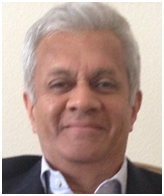 Azmat Malik was a senior executive in marketing and operations at major US, European, and Asian companies in the semiconductor industry. He provides strategy, marketing and operations consulting to early and mid-stage companies in cleantech, electronics, and medical devices, and social enterprises. He has advised emerging companies in setting go-to-market strategy, and prepared founders for seed, angel, and growth funding. His focus is in Power Electronics, Cleantech, Medical Devices, Sensors and MEMS. He was Associate Professor at the Lahore University of Management Sciences, teaching MBA courses in marketing. He is active in the angel investor community, focused on energy efficiency, smart grid, electronics thermal management, and medical diagnostics. He is President of the Engineering Alumni Society of the University of California, Berkeley. Mr. Malik was active in the Cleantech Open Accelerator, and has mentored startups that have become commercially successful. He has MSEE and MBA from the University of California, Berkeley.
Azmat Malik was a senior executive in marketing and operations at major US, European, and Asian companies in the semiconductor industry. He provides strategy, marketing and operations consulting to early and mid-stage companies in cleantech, electronics, and medical devices, and social enterprises. He has advised emerging companies in setting go-to-market strategy, and prepared founders for seed, angel, and growth funding. His focus is in Power Electronics, Cleantech, Medical Devices, Sensors and MEMS. He was Associate Professor at the Lahore University of Management Sciences, teaching MBA courses in marketing. He is active in the angel investor community, focused on energy efficiency, smart grid, electronics thermal management, and medical diagnostics. He is President of the Engineering Alumni Society of the University of California, Berkeley. Mr. Malik was active in the Cleantech Open Accelerator, and has mentored startups that have become commercially successful. He has MSEE and MBA from the University of California, Berkeley.
Bradley Younggren
Chief Medical Officer, Mobisante
Title: Ultrasound Everywhere
Abstract:
Smartphones have taken on a unanticipated role in healthcare by serving as medical devices for both consumers and health care providers. By leveraging the computing power in smartphones, companies are able to provide cheaper, more scalable options for the consumer. Moreover, cellular is one of the few technologies broadly available and adopted in developing nations. This talk will describe our quest to make cheap point-of-care ultrasound devices based on smartphone technology accessible around the world. Case studies from developed and developing nations will be presented. We will also discuss how these experiences apply to medical devices in the global space at large.
Bio:
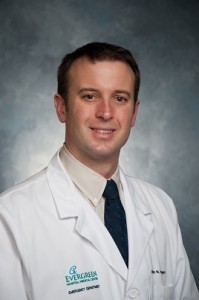 Dr. Bradley Younggren is the Chief Medical Officer of Mobisante, Inc., a company involved in delivering point of care ultrasound through both smartphones and tablets. He is also an active mentor for Highway1, a hardware incubator based in San Francisco, CA and has spoken on medical devices at numerous conferences such as Google I/O in 2014. He is also the Director of Emergency Ultrasound at Evergreen Hospital Medical Center in Kirkland, Washington and the Medical Director of Emergency Preparedness and the Associate Trauma Medical Director. Before coming to Evergreen, Dr. Younggren spent 11 years at Madigan Army Medical Center where he helped pioneer point-of-care ultrasound for the Army in both the Emergency Department as well as in the pre-hospital and combat environments. Dr. Younggren is an assistant clinical professor of Medicine at the University of Washington as well as Adjunct Professor in Emergency Medicine, Baylor School of Medicine. He is also a Faculty of Conflict and Catastrophe Medicine, The Worshipful Society of the Apothecaries of London. Dr. Younggren served a tour of duty in Iraq where he earned a Bronze Star for his performance with the 2-14 Cavalry Squadron (Stryker).
Dr. Bradley Younggren is the Chief Medical Officer of Mobisante, Inc., a company involved in delivering point of care ultrasound through both smartphones and tablets. He is also an active mentor for Highway1, a hardware incubator based in San Francisco, CA and has spoken on medical devices at numerous conferences such as Google I/O in 2014. He is also the Director of Emergency Ultrasound at Evergreen Hospital Medical Center in Kirkland, Washington and the Medical Director of Emergency Preparedness and the Associate Trauma Medical Director. Before coming to Evergreen, Dr. Younggren spent 11 years at Madigan Army Medical Center where he helped pioneer point-of-care ultrasound for the Army in both the Emergency Department as well as in the pre-hospital and combat environments. Dr. Younggren is an assistant clinical professor of Medicine at the University of Washington as well as Adjunct Professor in Emergency Medicine, Baylor School of Medicine. He is also a Faculty of Conflict and Catastrophe Medicine, The Worshipful Society of the Apothecaries of London. Dr. Younggren served a tour of duty in Iraq where he earned a Bronze Star for his performance with the 2-14 Cavalry Squadron (Stryker).
Brent Moellenberg
We Care Solar
Title: We Care Solar: Bringing the First 100 Watts to Last Mile Health Centers
Abstract:
Laura Stachel was studying obstetric care in an urban state hospital and surrounding clinics in Nigeria, she found a surprising result. Lack of reliable electricity was a major factor for maternal and infant mortality, even in grid-connected buildings. Women with pregnancy complications were unable to obtain life-saving care, for lack of light and electricity-dependent equipment, despite the availability of trained medical personnel.
Partnering with her husband, Hal Aronson, and engineer Brent Moellenberg, they developed a technology – the Solar Suitcase – and an organization – We Care Solar – to address the problem. Starting with pilot programs in Nigeria, Haiti, and Liberia, We Care Solar began installing Solar Suitcases in last mile health centers. Over the last four years, the organization has had a global reach, deploying hundreds of Solar Suitcases to rural clinics and hospitals in Africa and Asia. We Care Solar conducts training workshops to build local capacity in Solar Sustcase installations, usage and maintenance.
In this talk, Dr. Stachel and Mr. Moellenberg discuss the initial design criteria for the early Solar Suitcases, the iterative nature of designing technology for last mile health centers, and the challenges and delights of bringing this technology to scale.
Bio:
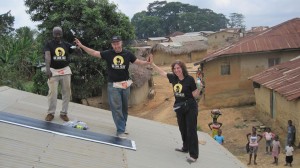 Brent Moellenberg is a Mechanical Engineer originally from Colorado, now living and working in San Francisco. He has been traveling to work with PV power systems in developing countries since 2005, and has designed and installed off-grid systems in some of the most remote areas throughout Africa and Haiti. In 2010, he joined We Care Solar as Lead Engineer helping to design and implement the Solar Suitcase, a self-contained off-grid solar power and lighting solution currently used in nearly 800 medical clinics in over 20 countries.
Brent Moellenberg is a Mechanical Engineer originally from Colorado, now living and working in San Francisco. He has been traveling to work with PV power systems in developing countries since 2005, and has designed and installed off-grid systems in some of the most remote areas throughout Africa and Haiti. In 2010, he joined We Care Solar as Lead Engineer helping to design and implement the Solar Suitcase, a self-contained off-grid solar power and lighting solution currently used in nearly 800 medical clinics in over 20 countries.
Bulent Bicer
Project Manager, Arizona State University
Title: VOCTEC: A sustainable capacity building initiative for renewable energy technologies
Abstract:
Within the last 20 years, many capacity building initiatives in the developing world on renewable energy technologies have proved to be less effective and practically unsustainable due to the lack of (1) practical and hands-on training materials, complementing theoretical classroom training; (2) integration into the existing educational framework; and (3) training infrastructure for renewable energy within this educational framework. For the past few years, Arizona State University (ASU) has been implementing a highly successful and innovative Vocational Training and Education on Clean Energy (VOCTEC) program in many developing regions in the world. So far, this innovative approach has yielded in more than 50 certified educators and more than 300 trained male and female solar PV professionals and technicians in Africa, the Pacific and the Caribbean .This session will provide an overview of the program scope, objectives and approach as well as results and impact in communities worldwide year-to-date.
Bio:
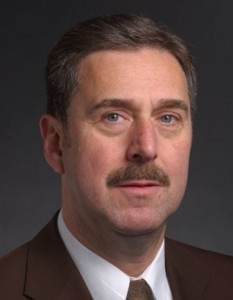 Bülent Bicer is a Project Manager at Arizona State University’s Ira A. Fulton Schools of Engineering on the Polytechnic campus. In this position, he designs and implements many of ASU’s international technical training programs and professional development projects in renewable energy and entrepreneurship. Examples include a multi-year Vocational Training and Education on Clean Energy program in the Pacific, Kenya and India, a renewable energy and entrepreneurship program in the Caribbean, Solar Certification for West-Africa and Renewable Energy Entrepreneurship training in the Pacific Islands. He is the co-founder of ASU’s ATIC center which is dedicated for the product/prototyping needs of small businesses and is the co-inventor of ASU’s Mobile Training Toolkit, a portable “out-of-the-box” training center for solar PV technologies and systems for vocational and technical educational institutions. Mr. Bicer is also affiliated with ASU’s Photovoltaic Reliability Laboratory, where he executes solar PV related research projects.
Bülent Bicer is a Project Manager at Arizona State University’s Ira A. Fulton Schools of Engineering on the Polytechnic campus. In this position, he designs and implements many of ASU’s international technical training programs and professional development projects in renewable energy and entrepreneurship. Examples include a multi-year Vocational Training and Education on Clean Energy program in the Pacific, Kenya and India, a renewable energy and entrepreneurship program in the Caribbean, Solar Certification for West-Africa and Renewable Energy Entrepreneurship training in the Pacific Islands. He is the co-founder of ASU’s ATIC center which is dedicated for the product/prototyping needs of small businesses and is the co-inventor of ASU’s Mobile Training Toolkit, a portable “out-of-the-box” training center for solar PV technologies and systems for vocational and technical educational institutions. Mr. Bicer is also affiliated with ASU’s Photovoltaic Reliability Laboratory, where he executes solar PV related research projects.
Prior to joining ASU, he was an entrepreneur and held various international sales, marketing and leadership positions in the private sector in Europe and the U.S at global telecommunications and IT companies. Mr. Bicer holds a B.Sc. in Electrical Engineering and a M.Sc. in Industrial Engineering from the Munich University of Applied Sciences. He is a certified Project Management Professional (PMP) and a certified Six Sigma Green Belt.
Camille Crittenden
Deputy Director, CITRIS (Center for Information Technology Research in the Interest of Society)
Title: IT Innovations for Human Rights, Civic Engagement and Humanitarian Development
Abstract:
Innovations in online and mobile tools have sparked new means of public engagement, promoted government transparency and accountability, and strengthened democratic practices around the world. This presentation will examine the implications for democracy, human rights, and humanitarian missions stemming from new technology. It will consider the intended and unintended effects on elected officials and policymakers, international donors and public agencies, and the constituencies they serve. Case studies will include open data projects, crisis mapping initiatives, and new platforms for engaging voters and beneficiaries of humanitarian interventions. We will also discuss issues of the “digital divide,” consider which voices may be omitted from online representations, and explore ways to overcome these barriers to participation.
Bio:
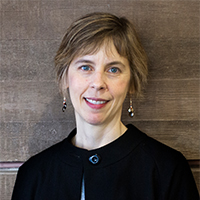 Camille Crittenden serves as Deputy Director of CITRIS (Center for Information Technology Research in the Interest of Society), Director of the Data and Democracy Initiative, and Executive Director of the Social Apps Lab. Prior to coming to CITRIS in 2012, she was Executive Director of the Human Rights Center at Berkeley Law, where she helped to develop its program in human rights, technology, and new media. She has written and spoken widely on these topics, as well as technology applications for civic engagement, government transparency and accountability, and the digital divide. She held previous positions as Assistant Dean for Development with International and Area Studies at UC Berkeley and in development and public relations at University of California Press and San Francisco Opera. She earned an MA and Ph.D. from Duke University.
Camille Crittenden serves as Deputy Director of CITRIS (Center for Information Technology Research in the Interest of Society), Director of the Data and Democracy Initiative, and Executive Director of the Social Apps Lab. Prior to coming to CITRIS in 2012, she was Executive Director of the Human Rights Center at Berkeley Law, where she helped to develop its program in human rights, technology, and new media. She has written and spoken widely on these topics, as well as technology applications for civic engagement, government transparency and accountability, and the digital divide. She held previous positions as Assistant Dean for Development with International and Area Studies at UC Berkeley and in development and public relations at University of California Press and San Francisco Opera. She earned an MA and Ph.D. from Duke University.
Catherine B. Nelson
Disaster Communications Engineer/Humanitarian Technologist, Senior Security Researcher, Intel Corporation
Title: Effective Presentations for a Global Audience
Abstract:
In today’s world half the battle is getting your message across. However this is easier said than done. When dealing with cross-cultural and multilingual audiences, how do you ensure they understand what you are saying, can follow your slideshow and do not fall asleep. Also as technical people, we need to be able to get our ideas across to non-technical people, especially since they are often the ones who hold the purse strings or can help promote your ideas. This session will focus on how to build a good slide presentation, what works and what does not. We will discuss how to handle a mixed audience of both technical and non-technical people. Lastly we will discuss how to speak to a global audience and how keep the audience’s attention.
Bio:
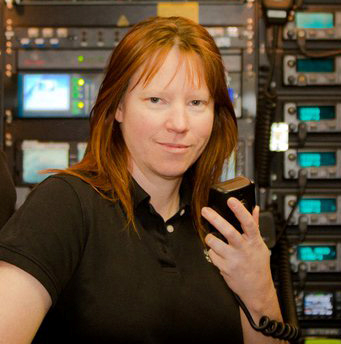 Catherine Blackadar Nelson has a B.A. in computer science specializing in security, Internet technologies, and communications. She has over 20 years experience in emergency response and has participated in many responses including Hurricane Katrina, the Haitian earthquake, and the Japan 2011 earthquake/tsunami. She is a regular speaker at security and humanitarian conferences and an advisor to multiple organizations, including the UN, USAID and FEMA providing guidance in disaster and remote communications.
Catherine Blackadar Nelson has a B.A. in computer science specializing in security, Internet technologies, and communications. She has over 20 years experience in emergency response and has participated in many responses including Hurricane Katrina, the Haitian earthquake, and the Japan 2011 earthquake/tsunami. She is a regular speaker at security and humanitarian conferences and an advisor to multiple organizations, including the UN, USAID and FEMA providing guidance in disaster and remote communications.
For the past 8 years she was instrumental in building the Cisco Tactical Operations Disaster Response team, which specializes in providing disaster and mobile communications in austere environments. She provided engineering expertise, logistical support, responder training, and was the primary developer of incident tracking and disaster management tools. The TacOps team earned the 2011 American Red Cross “Real Heroes Innovative Preparedness Award”, the 2012 CA Emergency Services Assoc Silver Award for “Emergency Management”, and she was also awarded a 2011 Certificate of Special Congressional Recognition for “Bay Area Hometown Hero”
Current she is a Senior Security Researcher at Intel. She has a patent pending for Security Risk Modeling, is a private pilot and HAM radio operator. She is a member of the NetHope Women’s TechConnect Mentor program and working to help develop the Rapid Technology Assessment Team Initiative launched out of the US Naval Post Graduate School, which provides communications assessments in disasters to the humanitarian community.
Devin Balkind
Founder & Director, Sarapis; Lead Coordinator, NYC:Prepared
Title: Emergent Response: How humanitarian organizations and grassroots networks can collaborate on disasters response and recovery work
Abstract:
Social networking, collaborative productivity software and free/libre/open-source (FLO) tools and techniques are empowering everyday people to organize their own large scale disaster response efforts. Occupy Sandy in New York City constituted one such effort; growing to tens of thousands of volunteers in a matter of weeks, it was the largest volunteer-led disaster relief effort in recent US history.
This talk will describe Occupy Sandy’s organizational structure and activities, examine why Occupy Sandy and relief institutions found it difficult to collaborate, explain how NYC:Prepared’s FLO tools enable collaboration between relief institutions and citizen-led response efforts, and propose a few simple steps humanitarian agencies can take to leverage emerging grassroots networks to improve the effectiveness of their relief work.
Devin Balkind works at the intersection of the nonprofit sector, the free/libre/open-source (FLO) movement, and community organizing to help each benefit from the best practices of the others.
Through Sarapis, the nonprofit organization where he serves as Executive Director, Devin applies FLO methodologies to civic challenges by developing and deploying software tools and operational techniques for a wide range of groups, including software communities, human service providers and, most recently, disaster relief coalitions.
Donna Baranski-Walker
Founder & Executive Director of Rebuilding Alliance
Title: Technology, Gaza, and Perception: a Human Response to Human Suffering
Abstract:
With over 110,000 Palestinians made homeless, Americans are responding thoughtfully to overwhelming scenes of man-made disaster. This session will explore the multifaceted ways in which social media have emerged as a leading player in building humanitarian support for embattled communities in Israel/Palestine, and how social media offers enhanced perceptions of the shared, very human reality both of American Muslims and of the communities of the Middle East judged by U.S. attitudes and policies.
Bio:
 Donna Baranski-Walker is the Founder & Executive Director of Rebuilding Alliance, a U.S. nonprofit organization dedicated to rebuilding war-torn communities and making them safe. Donna holds a B.S. in EE from the Massachusetts Institute of Technology, and an M.S. in Ag. Eng. from the University of Hawaii. In 2003, she helped a Muslim Palestinian village build their kindergarten, then design, finance, and build affordable homes, a model for the neighborhood-centered design needed now in Gaza. On the 30th anniversary of the founding of the Polish Solidarity movement, Donna was awarded the Medal of Gratitude at the Gdansk Shipyard in Poland before 27,000 people for her organizing in Chicago when she was 24 years old. Donna’s work in the Middle East began in 1990 when her New York Times op-ed, “Small Lights in the Darkness,” was translated into Arabic and presented to the Iraqi Women’s Federation a week before the First Gulf War began.
Donna Baranski-Walker is the Founder & Executive Director of Rebuilding Alliance, a U.S. nonprofit organization dedicated to rebuilding war-torn communities and making them safe. Donna holds a B.S. in EE from the Massachusetts Institute of Technology, and an M.S. in Ag. Eng. from the University of Hawaii. In 2003, she helped a Muslim Palestinian village build their kindergarten, then design, finance, and build affordable homes, a model for the neighborhood-centered design needed now in Gaza. On the 30th anniversary of the founding of the Polish Solidarity movement, Donna was awarded the Medal of Gratitude at the Gdansk Shipyard in Poland before 27,000 people for her organizing in Chicago when she was 24 years old. Donna’s work in the Middle East began in 1990 when her New York Times op-ed, “Small Lights in the Darkness,” was translated into Arabic and presented to the Iraqi Women’s Federation a week before the First Gulf War began.
Eric Rasmussen
CEO, Infinitum Humanitarian Systems and Core Faculty in Exponential Medicine and Global Grand Challenges, Singularity University
Title: System Design in Disaster Response: Providing Clean Water and Restarting
Abstract:
Climate change, environmental degradation, and population vulnerability are all causing a gradual but perceptible increase in the frequency and severity of natural disasters. The communities most at risk in such disasters are those least able to protect themselves from the disruption of critical physical and economic systems. Response teams, acting with the support of national and international agencies, can provide a bridge from the immediate aftermath of an event into a recovery toward normal, but those disaster response teams do not usually remain long enough to see critical systems restored, nor it is their task.
However, some teams are designing a functional deployment extension from response through recovery to reconstruction, focusing on new designs for water and communications that begin in the immediate response phase. One effort is for the urgent, and then ongoing, delivery of purified drinking water at the neighborhood level – 500 to 1000 people at a time. The other is a dedicated technical assessment of communications infrastructure damage to accelerate the rate of recovery and improve resilience during rebuilding. During this presentation we’ll review the historical need for water, power, and comms in developing-world disasters, and explain our recent deployment findings from Supertyphoon Haiyan. We’ll then describe the two practical initiatives under development in water and communications to accelerate response effectiveness, establish long-term improvements in public health, and generate local income in a disaster zone. Please note that there are a number of problems we’ve not yet solved, and we welcome collaboration partners.
Bio:
 Dr. Eric Rasmussen is a medical doctor and the CEO for Infinitum Humanitarian Systems (IHS), a private sector social business built on a profit-for-purpose model. By training he is an internal medicine physician with both undergraduate and medical degrees from Stanford University and a Masters degree in disaster medicine from the UN World Health Organization’s affiliate CEMEC (Centre European pour la Medecin des Catastrophes) in Italy. He was elected a Fellow of the American College of Physicians in 1997.
Dr. Eric Rasmussen is a medical doctor and the CEO for Infinitum Humanitarian Systems (IHS), a private sector social business built on a profit-for-purpose model. By training he is an internal medicine physician with both undergraduate and medical degrees from Stanford University and a Masters degree in disaster medicine from the UN World Health Organization’s affiliate CEMEC (Centre European pour la Medecin des Catastrophes) in Italy. He was elected a Fellow of the American College of Physicians in 1997.
Rasmussen is a Research Professor in Environmental Security and Global Medicine at San Diego State University and an instructor in disaster medicine at both the International Disaster Academy in Bonn, Germany (BBK,or Bundesamt für Bevölkerungsschutz ind Katastrophenhilfe) and the Institute for Disaster Preparedness in Beijing, China.
He is a member of the core faculty at Singularity University within the NASA Ames Research Center, teaching in both the Exponential Medicine and Global Grand Challenges tracks. He also serves as Permanent Advisor to the UN Secretary-General’s High Level Expert Panel on Water Disasters, and is a member of the US National Academy of Science’s Committee on Grand Challenges in Global Development.
Rasmussen served as a physician in the US Navy for 25 years aboard nuclear submarines, amphibious ships and aircraft carriers. He was Fleet Surgeon for the US Navy’s Third Fleet and chairman of an academic department of medicine in Seattle. Among his wartime deployments are Bosnia (x3), Afghanistan (x2), and Iraq for ten months. His disaster deployments include Supertyphoon Haiyan in the Philippines, Haiti’s earthquake, Banda Aceh for the tsunami, and New Orleans after Hurricane Katrina.
Rasmussen also spent nine years as a Principal Investigator in humanitarian informatics for the Defense Advanced Research Projects Agency (DARPA) and received DARPA’s capstone award as Outstanding Investigator of the Year before retiring from the Navy to serve as the CEO of InSTEDD, a humanitarian NGO spun off from Google.org to put into action the goals outlined by Dr. Larry Brilliant’s TED Prize speech for better global disease outbreak surveillance and response.
He lives with Demi, his wife of 30 years, on Bainbridge Island near Seattle, Washington.
Iana Aranda
Senior Program Manager, Engineering for Global Development Sector, ASME
Title: Trends in Engineering for Global Development
Abstract:
This talk will be focus on products targeting those living in poverty, hurdles to implementation of fit-for-service products, the role of standards and present a new mechanism for product design and development.
Bio:
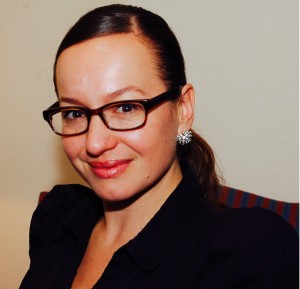 Iana Aranda is a Senior Program Manager of the Engineering for Global Development sector at ASME, a not-for-profit professional organization that enables collaboration, knowledge sharing and skill development across all engineering disciplines, while promoting the vital role of the engineer in society. Her primary focus at ASME is on the design, development and implementation of a portfolio of programs in emerging markets, social innovation and sustainable design. Iana also serves as the Senior Programs Architect for Engineering for Change, LLC (E4C) – a global alliance of 15 organizations and 21,000+ individuals dedicated to promoting sustainable and accessible technology-based solutions for underserved communities. In this role, she has guided the development of E4C’s digital platform, content strategy, and partnerships with technical societies, NGOs and other organizations involved in developing and deploying essential technologies.
Iana Aranda is a Senior Program Manager of the Engineering for Global Development sector at ASME, a not-for-profit professional organization that enables collaboration, knowledge sharing and skill development across all engineering disciplines, while promoting the vital role of the engineer in society. Her primary focus at ASME is on the design, development and implementation of a portfolio of programs in emerging markets, social innovation and sustainable design. Iana also serves as the Senior Programs Architect for Engineering for Change, LLC (E4C) – a global alliance of 15 organizations and 21,000+ individuals dedicated to promoting sustainable and accessible technology-based solutions for underserved communities. In this role, she has guided the development of E4C’s digital platform, content strategy, and partnerships with technical societies, NGOs and other organizations involved in developing and deploying essential technologies.
In addition to her role at ASME, Iana has served as the President of the Engineers Without Borders (EWB-USA) New York Professional Chapter for over 4 years where she administered projects in Kenya, Cambodia, Peru, El Salvador and Uganda and managed strategic development, partnerships, volunteer leadership, operations and new project design. Iana has over 10 years of experience in academic, research and nonprofit sectors focusing on the intersection of engineering design, business development and social responsibility. Her unique professional background has established her as a knowledge broker and global connector with networks extending across science, technology, education, and global development sectors. Iana is an active agent for social change, with a proven record of creative problem solving and bridging diverse communities.
Jennifer Fortier Stewart, MBA
Senior Manager, Government Grants, IEEE Corporate Activities
Title: Finding the Funding: Leveraging internal and external resources to fund your program or meeting.
Abstract:
With so many excellent programs and meetings competing for limited resources, how do you find the funding you need to make the most of your great ideas? This session will give you an overview of funding programs within IEEE and provide a road map for seeking external funding from private foundations/trusts and government agencies in U.S. and Europe. Learn
- how to become an authorized IEEE Principal Investigator,
- how to submit applications to private foundations and government agencies,
- how to manage federal funds post-award, and
- where to go for the help you need.
Well executed applications result in funded grants. Working with IEEE’s Government Grants staff, the 2014 GHTC conference organizers were able to secure $38,000 from federal agencies. Learn how you can do the same.
Bio:
 Jennifer Fortier Stewart, Senior Manager, Government Grants, currently oversees the business administration activities of each of the IEEE’s federal grants and cooperative agreements, including grants from NASA, NSF, and the U.S. State Department, among others. She is charged with leading IEEE’s efforts to raise funding from government sources in the United States and abroad, in support of IEEE’s programs and initiatives. Ms. Stewart has over thirteen years of experience in the field of federal grants, contracts and cooperative agreements. She began her career overseeing Economic Development Administration (EDA) grants to small and minority-owned businesses in Philadelphia, PA. Since that time, she has served as a professional grant writer and grant manager to a number of non-profits in the Philadelphia and Washington, D.C. areas. Most recently, Jennifer served as the Grants Administration Director for the international Association of Fire Fighters (IAFF), where she oversaw more than $20 million in direct grants, contracts and cooperative agreements focused on subject areas critical to fire fighters and the communities they serve. She also assisted cities throughout the United States in securing over $200 million in federal funds in support of local fire and emergency response services. Jennifer is part of the Corporate Development team under IEEE Corporate Activities, and she works closely with the accounting staff, each of IEEE’s operating units, the Office of the Comptroller and IEEE member groups, to ensure that the IEEE meets all of its grant deliverables, fulfills its federal reporting requirements, and adheres to federal guidelines and regulations pertaining to federal grant administration. Ms. Stewart has a Bachelor of Arts in International Area Studies from Drexel University and a Masters of Business Administration from the University of Maryland.
Jennifer Fortier Stewart, Senior Manager, Government Grants, currently oversees the business administration activities of each of the IEEE’s federal grants and cooperative agreements, including grants from NASA, NSF, and the U.S. State Department, among others. She is charged with leading IEEE’s efforts to raise funding from government sources in the United States and abroad, in support of IEEE’s programs and initiatives. Ms. Stewart has over thirteen years of experience in the field of federal grants, contracts and cooperative agreements. She began her career overseeing Economic Development Administration (EDA) grants to small and minority-owned businesses in Philadelphia, PA. Since that time, she has served as a professional grant writer and grant manager to a number of non-profits in the Philadelphia and Washington, D.C. areas. Most recently, Jennifer served as the Grants Administration Director for the international Association of Fire Fighters (IAFF), where she oversaw more than $20 million in direct grants, contracts and cooperative agreements focused on subject areas critical to fire fighters and the communities they serve. She also assisted cities throughout the United States in securing over $200 million in federal funds in support of local fire and emergency response services. Jennifer is part of the Corporate Development team under IEEE Corporate Activities, and she works closely with the accounting staff, each of IEEE’s operating units, the Office of the Comptroller and IEEE member groups, to ensure that the IEEE meets all of its grant deliverables, fulfills its federal reporting requirements, and adheres to federal guidelines and regulations pertaining to federal grant administration. Ms. Stewart has a Bachelor of Arts in International Area Studies from Drexel University and a Masters of Business Administration from the University of Maryland.
John Coonrod
Executive Vice President, The Hunger Project
Title: Smart Villages: Resilience, Gender and Decentralization
Abstract:
The majority of the world’s poor are women food farmers, and the constraints to their ability to lift themselves out of poverty are enormous and complex, and are compounded by the challenges of climate change. This talk will explore holistic strategies based on a systems approach to empowering women to overcome these challenges in Asia, Africa and Latin America, and will discuss the degree to which lessons learned from these strategies can be adapted to country-wide programs to achieve the forthcoming UN Post-2015 Sustainable Development Goals (SDGs).
John Coonrod is the Executive Vice President of The Hunger Project and is a former research physicist. Over the past 30 years, Dr. Coonrod has helped develop bottom-up, holistic poverty-reduction strategies in more than a dozen countries across Africa, South Asia and Latin America. He is an expert in gender and local democracy, and is the primary author of the UN-sponsored annual State of Participatory Democracy Report. He has been interviewed on BBC, CNN and NBC television and has lectured at the United Nations, Columbia University, Massachusetts Institute of Technology (MIT), New York University (NYU), Princeton University and the United States Air Force Academy.
John Crowley
Harvard Humanitarian Initiative
Title: Making Crisis Legible: Opening Data across the Disaster Cycle
Abstract:
Coordinated action requires both shared information and a mechanism to exchange it. The new Humanitarian Exchange Language and efforts around open data at The World Bank, UN Office for the Coordination of Humanitarian Affairs, World Food Programme, and other major players are changing the structure of information flows before, during, and after crisis. But no one is putting all the LEGOS together yet, and coordinated action is still faltering. This talk will examine the current major open data projects for crisis, survey the major challenges around the technologies and policies, and explore what would an integrated humanitarian data system might look like.
John Crowley mobilizes technologists, humanitarians, and policy makers to build multi-institutional solutions to big problems in crisis response. He is a consultant to the Global Facility for Disaster Reduction and Recovery at The World Bank Group, an adviser to the Humanitarian Data Exchange at UN Office for the Coordination of Humanitarian Affairs, and a researcher at the Harvard Humanitarian Initiative. John holds an MPA from Harvard’s Kennedy School of Government’s, where he was the Robert C. Seamans, Jr. Fellow in Science, Technology, and Public Policy. He also holds an MA in History of Ideas and an MusB in Cello Performance and Music History & Literature from Boston University. He tweets at @jcrowley.
John A. McKnight
Director, Emergency and Disaster Services, The Salvation Army San Francisco Metro and Golden State Division
Title: From Crab Pots to Micro Chips: How Technology Has Been Applied To Humanitarian and Disaster Relief through the Last Century
Abstract:
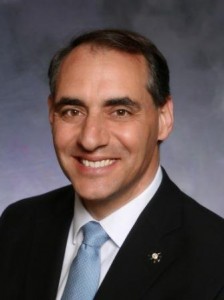 In my presentation, I will leverage from history and personal experiences in Humanitarian and Disaster Response to show how technologies, from the simple to the complex, have aided people in recovering their lives.
In my presentation, I will leverage from history and personal experiences in Humanitarian and Disaster Response to show how technologies, from the simple to the complex, have aided people in recovering their lives.
Bio:
John McKnight is the Director of Emergency and Disaster Services for The Salvation Army in San Francisco and the Golden State Division, an area that encompasses a third of California. He has over 25 years of combined experience in Emergency and Disaster Preparedness, Industrial Safety, and Business Resiliency planning. A Navy Veteran, he spent 10 years managing pharmaceutical manufacturing facilities before transitioning into the non-profit sector. As a former Board member of the American Red Cross in Marin County and a shelter manager, he helped plan for county and bay area wide responses by the Red Cross in the event of major disasters. He served as shelter manager during both the Loma Prieta earthquake and the Oakland hills fire. His unique combination of military, industrial, and community emergency preparedness backgrounds comes out in his lively presentations to educate and assist communities in their disaster preparedness planning.
Ken Dueker
Director of Emergency Services. Office of Emergency Services, City of Palo Alto (Calif.)
Demonstration Abstract:
State of the Art Mobile Communications: Mobile Emergency Operations Center (MEOC):
 This bus-sized mobile command vehicle is capable of serving as a back-up EOC, an Incident Command Post (ICP), and a back-up Public Safety Answering Point (PSAP) 911 Center.
This bus-sized mobile command vehicle is capable of serving as a back-up EOC, an Incident Command Post (ICP), and a back-up Public Safety Answering Point (PSAP) 911 Center.
The MEOC features a full interoperability system (Sytech RIOS), capable of transmitting or patching on a wide spectrum of frequencies from HF through microwave. In addition, the MEOC has a satellite dish for voice and data. The MEOC also includes a Barrett HF NVIS radio system, capable of communicating with the National Guard, the military, State OES, and other entities.
The MEOC is used about every other week, on average, and is often deployed to:
- Stanford Football Games: Such mass gatherings are not only identified as a high-risk target by the U.S. Department of Homeland Security, but have always been a priority for PAPD and the Stanford University Department of Public Safety (DPS). The MEOC serves as a communications and command post for PAPD, PAFD, and Stanford DPS staff.
- Calls for Service: In cases ranging from major criminal incidents (such as homicides), mutual aid requests, SWAT or other extended operations, the MEOC has been deployed.
- VIP & Presidential Visits: When the President visits Palo Alto/Stanford, the MEOC serves as the locus of our command and the Secret Service liaisons. Other VIPs, such as foreign dignitaries, may also be supported by MEOC deployment.
Bio:
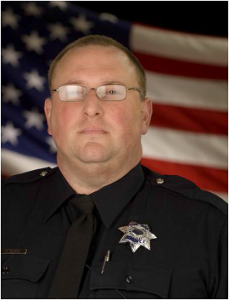 Kenneth Dueker, J.D., is the Director of Emergency Services for the City of Palo Alto and has held that position since 2011. Dueker joined the Palo Alto Police Department in the 1990s as a Reserve Officer and, later, worked full-time. He served in the Field Services Division (Patrol) as well as the Investigative Services Division (Detectives) in general law enforcement as well as special projects, later, reporting directly to the City Manager and to the Chief.
Kenneth Dueker, J.D., is the Director of Emergency Services for the City of Palo Alto and has held that position since 2011. Dueker joined the Palo Alto Police Department in the 1990s as a Reserve Officer and, later, worked full-time. He served in the Field Services Division (Patrol) as well as the Investigative Services Division (Detectives) in general law enforcement as well as special projects, later, reporting directly to the City Manager and to the Chief.
Dueker previously was a corporate emergency planner for the Atlantic Richfield Company (ARCO) where he developed life safety and disaster recovery contingency plans for the protection of company personnel and facilities. These plans and programs were tested and validated during the Northridge Earthquake of 1994.
Dueker is also the founder of PowerFlare Corporation, a maker of environmentally friendly, rugged LED lighting and signal products for public safety and rescue.
Dueker completed graduate school at Harvard University where he earned a doctorate in law (J.D.) from Harvard Law School. He holds an undergraduate degree, cum laude, from Pomona College (Claremont Colleges). He is also a member of Phi Beta Kappa.
Khanjan Mehta
Founding Director of the Humanitarian Engineering and Social Entrepreneurship (HESE) Program, Assistant Professor of Engineering Design, Penn State University
Title: From Humanitarian Engagement to Sustainable Impact
Abstract:
This talk will discuss four priorities to advance from engagement to impact:
1. Primacy of Economic Sustainability
Business models first
Specific price targets
Design products to designing ensembles
2. Need for Practical Partnerships
Across disciplines
External to the university (with non-profits interested in spinning off independent ventures)
Private sector partnerships
3. Need for Evidence-based approaches
Focused Applied Research
Implementation science
Finding new ways to nurture this art and communicate this science
4. Changing the Conversation
Defining Career Pathways and elevating development as a full-time profession / pursuit
Broader Engagement / Big Design Questions
Tough Questions / Frame Changers
Bio:
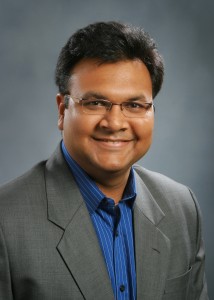 Khanjan Mehta is the Founding Director of the Humanitarian Engineering and Social Entrepreneurship (HESE) Program and Assistant Professor of Engineering Design at Penn State. Mehta has led technology-based social ventures in Kenya, Tanzania, India, Sierra Leone, Mozambique and other countries. These ventures range from telemedicine systems and ruggedized biomedical devices to low-cost greenhouses, solar food dryers, and cell phone-based social networking systems. Mehta has co-authored over 70 journal articles and refereed conference proceedings under the HESE umbrella. Mehta serves as an Associate Editor for the IEEE Technology and Society Magazine and Contributing Editor for the Engineering 4 Change portal. He is the creator of a daily cartoon series, Frame Changers, that captures learning moments in the broad areas of HESE and Sustainable Development. The HESE program was the recipient of the 2013 W.K. Kellogg Foundation Engagement Award from APLU, 2011 Outstanding Specialty Entrepreneurship Program Award from USASBE and was named by Popular Mechanics as one of thirty “Awesome College Labs” across America.
Khanjan Mehta is the Founding Director of the Humanitarian Engineering and Social Entrepreneurship (HESE) Program and Assistant Professor of Engineering Design at Penn State. Mehta has led technology-based social ventures in Kenya, Tanzania, India, Sierra Leone, Mozambique and other countries. These ventures range from telemedicine systems and ruggedized biomedical devices to low-cost greenhouses, solar food dryers, and cell phone-based social networking systems. Mehta has co-authored over 70 journal articles and refereed conference proceedings under the HESE umbrella. Mehta serves as an Associate Editor for the IEEE Technology and Society Magazine and Contributing Editor for the Engineering 4 Change portal. He is the creator of a daily cartoon series, Frame Changers, that captures learning moments in the broad areas of HESE and Sustainable Development. The HESE program was the recipient of the 2013 W.K. Kellogg Foundation Engagement Award from APLU, 2011 Outstanding Specialty Entrepreneurship Program Award from USASBE and was named by Popular Mechanics as one of thirty “Awesome College Labs” across America.
Laura Jacob
President, IEEE Society on the Social Implications of Technology
Title: Grameen + Palantir = Data Driven Agriculture
Abstract:
Over the past 18 months, Palantir Technologies has aided the Grameen Foundation in using technology to improve quality of life in the developing world. Focused on the most rural parts of these underdeveloped countries, Palantir is using big data analytics to uncover key insights that can help Grameen in improving lives in those communities. Together, the two hope to “bring technology the last mile.”
Laura Jacob is President of IEEE’s Society on the Social Implications of Technology, and serves on IEEE’s Humanitarian Committee. She is a Software Engineer for Palantir Technologies in Palo Alto, California. She holds a Bachelor’s Degree in Computer Science from Pace University.
Laura Stachel
We Care Solar and UC Berkeley (Blum Center for Developing Economies)
Title: We Care Solar: Bringing the First 100 Watts to Last Mile Health Centers
Abstract:
Laura Stachel was studying obstetric care in an urban state hospital and surrounding clinics in Nigeria, she found a surprising result. Lack of reliable electricity was a major factor for maternal and infant mortality, even in grid-connected buildings. Women with pregnancy complications were unable to obtain life-saving care, for lack of light and electricity-dependent equipment, despite the availability of trained medical personnel.
Partnering with her husband, Hal Aronson, and engineer Brent Moellenberg, they developed a technology – the Solar Suitcase – and an organization – We Care Solar – to address the problem. Starting with pilot programs in Nigeria, Haiti, and Liberia, We Care Solar began installing Solar Suitcases in last mile health centers. Over the last four years, the organization has had a global reach, deploying hundreds of Solar Suitcases to rural clinics and hospitals in Africa and Asia. We Care Solar conducts training workshops to build local capacity in Solar Sustcase installations, usage and maintenance.
In this talk, Dr. Stachel and Mr. Moellenberg discuss the initial design criteria for the early Solar Suitcases, the iterative nature of designing technology for last mile health centers, and the challenges and delights of bringing this technology to scale.
Bio:
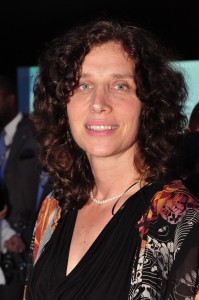 Dr. Laura Stachel is the co-founder and Executive Director of We Care Solar, an award-winning non-profit that designs and delivers solar-powered solutions to health centers to improve maternal and newborn health outcomes. Her husband, Dr. Hal Aronson, designed the first “Solar Suitcase” for Nigerian health care in 2009. Dr. Stachel is an obstetrician-gynecologist with fourteen years of clinical experience. She received her MD from University of California, San Francisco, and MPH from UC Berkeley. She is a Staff Specialist at the Blum Center for Developing Economies at UC Berkeley.
Dr. Laura Stachel is the co-founder and Executive Director of We Care Solar, an award-winning non-profit that designs and delivers solar-powered solutions to health centers to improve maternal and newborn health outcomes. Her husband, Dr. Hal Aronson, designed the first “Solar Suitcase” for Nigerian health care in 2009. Dr. Stachel is an obstetrician-gynecologist with fourteen years of clinical experience. She received her MD from University of California, San Francisco, and MPH from UC Berkeley. She is a Staff Specialist at the Blum Center for Developing Economies at UC Berkeley.
Dr. Stachel was the Principle Investigator of a MacArthur Foundation funded study on Solar Suitcases in northern Nigeria and Uganda. Laura co-chairs the United Nations Foundation Practitioners’ Working Group on Energy and Health, and is a strong advocate for using renewable energy to enhance rural health care. Laura has received numerous honors, and was a 2013 CNN Top Ten Hero for her work with We Care Solar.
Lisha Sterling
Executive Director, Geeks Without Bounds
Title: Beyond the hackathon: accelerating open source projects toward sustainability.
Abstract:
 Geeks Without Bounds (GWOB) supports open source humanitarian projects through a combination of hackathons and an accelerator program that takes promising projects through six months of mentorship towards long term sustainability. In this talk, we’ll look at a cross section of the hardware and software projects that GWOB supports both in the accelerator and on an ad hoc basis, sharing some of the lessons that we’ve learned along the way. We’ll look at how projects grow through a series of hackathons and what happens in between the code sprints. We’ll also discuss how you or your project team can get involved so that we can improve humanitarian digital response together.
Geeks Without Bounds (GWOB) supports open source humanitarian projects through a combination of hackathons and an accelerator program that takes promising projects through six months of mentorship towards long term sustainability. In this talk, we’ll look at a cross section of the hardware and software projects that GWOB supports both in the accelerator and on an ad hoc basis, sharing some of the lessons that we’ve learned along the way. We’ll look at how projects grow through a series of hackathons and what happens in between the code sprints. We’ll also discuss how you or your project team can get involved so that we can improve humanitarian digital response together.
Bio:
Lisha Sterling is the executive director at Geeks Without Bounds, an accelerator that supports open source humanitarian projects through hackathons and mentorship. She is listed in the P2P Foundation’s list of 100 Women Co-Creating The Peer To Peer Society. She has been a software developer for over 20 years. She brings that experience together with her formal education in Latin American Studies and early work experience in international aid and refugee support to help engineers and those who work in crisis response build common languages for working on a wide range of challenges.
Luke Filose
Intel Corporate Responsibility Office, Intel
Title: Humanitarian Inc.? Exploring the Corporate Role in International Development Projects
Abstract:
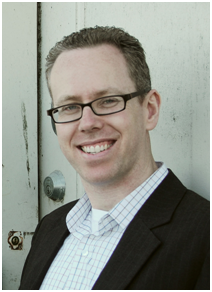 How and why does a multinational corporation engage with NGOs on a grassroots level to deploy technology in the developing world? What are the opportunities from a product development, employee engagement, community impact and strategic partnership perspective? What are the pitfalls and risks? This session will share lessons learned from Intel’s experiences working with partners to deploy technology in some of the most challenging environments on earth. We will explore the application of technology to improve education, health, and agricultural productivity, and the importance of human capital, open communication and shared expectations.
How and why does a multinational corporation engage with NGOs on a grassroots level to deploy technology in the developing world? What are the opportunities from a product development, employee engagement, community impact and strategic partnership perspective? What are the pitfalls and risks? This session will share lessons learned from Intel’s experiences working with partners to deploy technology in some of the most challenging environments on earth. We will explore the application of technology to improve education, health, and agricultural productivity, and the importance of human capital, open communication and shared expectations.
Bio:
Luke Filose works in Intel’s Corporate Responsibility Office where he manages the Intel Education Service Corps. IESC is an employee engagement program that provides technical assistance to NGOs and governments deploying Intel solutions in developing countries. Luke has extensive sales and marketing experience in emerging markets in the technology and renewable energy sectors and has also managed NGO projects on the ground in Africa. Luke was a Peace Corps volunteer in Mauritania where he focused on microfinance and business education. He has a BA and MBA from UC Berkeley with an emphasis on social entrepreneurship and corporate social responsibility.
Maha Elgenaidi
Executive Director, Islamic Networks Group
Title: Technology, Gaza, and Perception: a Human Response to Human Suffering
Abstract:
With over 110,000 Palestinians made homeless, Americans are responding thoughtfully to overwhelming scenes of man-made disaster. This session will explore the multifaceted ways in which social media have emerged as a leading player in building humanitarian support for embattled communities in Israel/Palestine, and how social media offers enhanced perceptions of the shared, very human reality both of American Muslims and of the communities of the Middle East judged by U.S. attitudes and policies.
Bio:
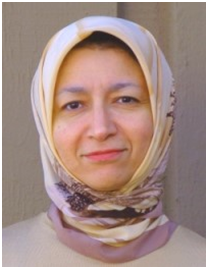 Maha Elgenaidi is the Executive Director of Islamic Networks Group (ING), a non-profit organization with affiliates around the country that counter prejudice and discrimination against American Muslims by teaching about their traditions and contributions in the context of America’s history and cultural diversity, while building relations between American Muslims and other groups. She is the author of training handbooks on outreach for American Muslims as well as training seminars for public institutions on developing cultural competency with the American Muslim community. A senior fellow of the American Leadership Forum and recently named by the San Jose Business Journal as one of Silicon Valley’s Women of Influence, Maha has been recognized with numerous civil rights awards, including the “Civil Rights Leadership Award” from the California Association of Human Relations Organizations and the “Citizen of the Year” award from the Santa Clara County Board of Supervisors. She holds a master’s degree in Religious Studies from Stanford University and received her bachelor’s degree in Political Science and Economics from the American University in Cairo.
Maha Elgenaidi is the Executive Director of Islamic Networks Group (ING), a non-profit organization with affiliates around the country that counter prejudice and discrimination against American Muslims by teaching about their traditions and contributions in the context of America’s history and cultural diversity, while building relations between American Muslims and other groups. She is the author of training handbooks on outreach for American Muslims as well as training seminars for public institutions on developing cultural competency with the American Muslim community. A senior fellow of the American Leadership Forum and recently named by the San Jose Business Journal as one of Silicon Valley’s Women of Influence, Maha has been recognized with numerous civil rights awards, including the “Civil Rights Leadership Award” from the California Association of Human Relations Organizations and the “Citizen of the Year” award from the Santa Clara County Board of Supervisors. She holds a master’s degree in Religious Studies from Stanford University and received her bachelor’s degree in Political Science and Economics from the American University in Cairo.
Mario Aleman
SIGHT Nicaragua, Universidad Nacional de Ingenieria
Title: Prototyping Appropriate Medical Technologies for Quality Community Health Services
Abstract:
Rural clinics serve over 3 billion people worldwide, and over half of these clinics lack electricity, and appropriate medical technologies. As a result, one often observes elevated post-surgical infection rates in such condition-poor regions. Due to the lack of a local maintenance infrastructure, donation of first-world solutions often end up contributing only to a graveyard of irreparable machines.
In Nicaragua, a developing country located in Central America, there is abundant solar radiation in most rural areas which represent opportunities to mainstream the advancement of medical technology. To address this multi-faceted problem, the Solarclave project harnesses the power of the sun to fuel steam sterilization in an autoclave that is locally manufactured using pre-existing local supply chains and expertise. The Solarclave project aims not only to provide rural clinics with a sustainable and socially integrable device, but also creates better economic opportunities. Furthermore, a prototyping laboratory is being developed with help of IEEE SIGHT Nicaragua, students and professors from Universidad Nacional de Ingenieria UNI and other international universities to provide renewable energy applications and medical technology to fabricate innovative, cost effective and robust devices. Among other solutions being developed for community clinics are: solar-powered weather stations, medical incubators, foot-pump nebulizers, solar-powered cooler for vaccination storage, and other 3D printed DIY (Do-it-yourself applications) applications operated by micro-controllers.
Upon successfully piloting our projects with various clinics, institutions and organizations in Nicaragua, we will look to adapting our devices, capabilities and infrastructure to provide higher quality of rural health service in other communities and developing countries.
Bio:
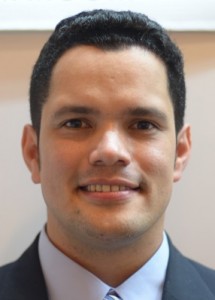 Mario Aleman is a Senior Member of IEEE (The Institute of Electrical and Electronics Engineers) from Nicaragua. He received the B.S degree from Universidad Nacional de Ingenieria in Nicaragua and his M.S. degree from Berlin Technical University in Germany both in Electronic Engineering. He has research experience in Photovoltaic technology and renewable energy as a visiting research scholar at Massachusetts Institute of Technology, Arizona State University, and Cornell University. Mario serves as IEEE Nicaragua Section Chair and founder of the Maker Space initiative. Recipient of several young social entrepreneur awards after founding Bright New Ideas in 2006, a non for profit organization dedicated to the design and distribution of solar lanterns in more than 150 underserved communities in Nicaragua. As SIGHT (Special Interest Group for Humanitarian Technology) founder, Mario leads the implementation of community-based projects in technology in communities working closely with academic institutions, both locally and globally. Mario is a VOLT (Volunteer Leadership Training Program) graduate from 2013 with experience developing strategies and generating project ideas to be locally implemented in his section. Mario also serves as a Young Professional YP Chair for CAPANA (Central America and Panama) council in Region 9 and volunteer member for YP leadership and training. He is recipient of Hall of Fame Award for outstanding young professionals groups and also recipient of the IEEE Theodore W. Hissey award, as an outstanding volunteer for the development of young professionals and student activities in Region 9.
Mario Aleman is a Senior Member of IEEE (The Institute of Electrical and Electronics Engineers) from Nicaragua. He received the B.S degree from Universidad Nacional de Ingenieria in Nicaragua and his M.S. degree from Berlin Technical University in Germany both in Electronic Engineering. He has research experience in Photovoltaic technology and renewable energy as a visiting research scholar at Massachusetts Institute of Technology, Arizona State University, and Cornell University. Mario serves as IEEE Nicaragua Section Chair and founder of the Maker Space initiative. Recipient of several young social entrepreneur awards after founding Bright New Ideas in 2006, a non for profit organization dedicated to the design and distribution of solar lanterns in more than 150 underserved communities in Nicaragua. As SIGHT (Special Interest Group for Humanitarian Technology) founder, Mario leads the implementation of community-based projects in technology in communities working closely with academic institutions, both locally and globally. Mario is a VOLT (Volunteer Leadership Training Program) graduate from 2013 with experience developing strategies and generating project ideas to be locally implemented in his section. Mario also serves as a Young Professional YP Chair for CAPANA (Central America and Panama) council in Region 9 and volunteer member for YP leadership and training. He is recipient of Hall of Fame Award for outstanding young professionals groups and also recipient of the IEEE Theodore W. Hissey award, as an outstanding volunteer for the development of young professionals and student activities in Region 9.
Meg Wirth and Allyson Cote
Co-founders of Maternova, Inc.
Title: The Lifecycle of Innovations and Technologies for Empowering Women & Girls Worldwide
Abstract:
The Lifecycle of Innovations and Technologies for Empowering Women & Girls Worldwide The number of girls and women living in poverty around the world is growing disproportionately in relation to men. The fundamental lack of basic health care, education, and personal safety is trapping girls in poverty. In many countries, giving birth, is the single most dangerous thing a woman can do. Over 2.3 million women and newborns will not survive the experience of birth this year. Their lives are cut needlessly short. Though the day of birth is the day of gravest danger, the solutions start in childhood and even before that… In utero! There are a growing number of revolutionary entrepreneurs and innovators developing sustainable solutions for improving the outcomes and quality of life for women and girls. Maternova is pleased to share our insight into how the commercialization and deployment of exciting disruptive technologies and novel innovations are reducing preventable mortality. Simple innovations touching every stage of girls’ development are needed to improve both personal and community benefits over a lifetime.
Bios:
Meg Wirth is the co-founder of Maternova, Inc & Maternova Research and a S.E.VEN fellow and a Cartier Women’s Initiative finalist. She has worked on women’s health throughout her career in areas as diverse as starting a home visiting program for teen mothers in Appalachia to monitoring and evaluating a major Safe Motherhood initiative–funded by USAID and implemented by John Snow International’s Mothercare project– in Jakarta and South Kalimantan, Indonesia. Meg has  also worked as a member of the Rockefeller Foundation’s Health Equity team and co-edited a major volume called Challenging Inequities in Health: From Ethics to Action. She was a co-author of the UN Millennium Project’s final report on child and maternal health. She has a BA from Harvard University and an MPA in international development from Princeton University’s Woodrow Wilson School.
also worked as a member of the Rockefeller Foundation’s Health Equity team and co-edited a major volume called Challenging Inequities in Health: From Ethics to Action. She was a co-author of the UN Millennium Project’s final report on child and maternal health. She has a BA from Harvard University and an MPA in international development from Princeton University’s Woodrow Wilson School.
Allyson E. Cote is Maternova’s Co-Founder and Vice President. A serial entrepreneur, Allyson has cofounded two successful startup companies, Shape Up, Inc a global wellness platform and SaaS revolutionizing social networking as part of health, along with Alessandra Gold, Inc. a cutting edge global apparel and footwear ecommerce retailer with offices in three countries. She attended the University of Massachusetts graduating with a degree in Sociology. Currently she is working towards an MBA in Advocacy and Policy. With Maternova, Inc and Maternova Research, Allyson focuses on proprietary product development and marketing.
Muhammad Zaman
Howard Hughes Medical Institute Professor of Biomedical Engineering and International Health at Boston University
Title: Saving Lives by Improving Global Medicine Quality: Microfluidics meets Quality Control
Abstract:
The World Health Organization estimates that about 10-30% of pharmaceuticals in the world are either substandard or counterfeit. Poor quality medicines indicate a compromised health system that adversely affects health outcomes. It has a major impact on morbidity, mortality and public and individual finances. Additionally, it is also a key contributor to the development and proliferation drug resistant strains of infections, including TB, malaria and other infections that affect us all, in the developed and the developing world. The human cost is well above the $75 billion annual estimated cost to pharmaceutical industry.
The current and available technologies for screening poor quality drugs can be broadly divided into two categories: high cost, quantitative technologies and lower cost and qualitative technologies. The high-end methods, (e.g. HPLC) can give a precise measurement of active pharmaceutical ingredients (API) concentration, but require trained personnel, advanced lab set up and are not suitable for field testing in resource limited settings. The cost is often prohibitive and leads to no testing whatsoever, leading to further problems. The current alternative is a low cost method, recommended by the WHO, known as the MiniLab. This technology is inexpensive but provides only qualitative results and can not provide any dissolution testing.
In order to address these challenges, we have developed and successfully tested a novel technology, Pharmachck that uses a microfluidic chip based technology, novel molecular probes and an on-chip mixing system to quantify the concentration, dissolution, quality and activity of drugs, all within the same experiment. This technology substantially reduces the cost of testing and has been successfully tested both in the lab and in resource limited settings.
Some of the advantages of the technology include: 1) Improved accuracy, portability and reliability compared with field standard (e.g. Minilab), 2) Ability to carry out dissolution testing 3) Performance as a point-of-care technology in remote settings 4) An inexpensive, disposable and portable microfluidics platform 5) A customizable, modular platform to perform analyses in small spaces.
The focus of this talk will be the global challenge associated with poor quality drugs, the current solutions and their limitations and our solution that is now being scaled in multiple countries and is being considered by public and private sector stake holders at all points in the vulnerable supply chain for life saving drugs.
Bio:
 Muhammad H. Zaman is Howard Hughes Medical Institute Professor of Biomedical Engineering and International Health at Boston University. He is also the Associate Chair of the Department of Undergraduate Affairs and Associate Director of the Kilachand Honors College. Prof. Zaman’s current research is focused on developing robust technologies for the developing world and on capacity building and education in these countries. Technologies developed by Prof. Zaman are in various stages of implementation in multiple countries. Prof. Zaman’s technology, Pharmachk, that is able to rapidly and quantitatively detect substandard and counterfeit medicines, was named one of the ten “world changing idea” by Scientific American in 2013 and was awarded the Saving Lives at Birth Transition to Scale ($2 million) grant in 2014.
Muhammad H. Zaman is Howard Hughes Medical Institute Professor of Biomedical Engineering and International Health at Boston University. He is also the Associate Chair of the Department of Undergraduate Affairs and Associate Director of the Kilachand Honors College. Prof. Zaman’s current research is focused on developing robust technologies for the developing world and on capacity building and education in these countries. Technologies developed by Prof. Zaman are in various stages of implementation in multiple countries. Prof. Zaman’s technology, Pharmachk, that is able to rapidly and quantitatively detect substandard and counterfeit medicines, was named one of the ten “world changing idea” by Scientific American in 2013 and was awarded the Saving Lives at Birth Transition to Scale ($2 million) grant in 2014.
Prof. Zaman is actively involved in bringing quality engineering education in the developing countries. He is currently involved in setting up the first biomedical engineering departments at African Universities in Kenya, Zambia, Malawi, Uganda and Ethiopia. He is on the board of Consortium of Universities for Global Health (elected 2014).
He has won numerous awards for his research, teaching and outreach activities from prestigious national and international organizations. His current research is supported by NIH, NSF, USAID, Saving Lives at Birth Consortium, and other private foundations. He is a regular contributor on issues of innovation and global health for the Project Syndicate, Huffington Post and writes a weekly column on innovation and health for a leading Pakistan daily, Express Tribune (owned by the NY Times).
Raj Madhavan
IEEE Robotics & Automation Society – Special Interest Group on Humanitarian Technology (RAS–SIGHT)
Title: Humanitarian Robotics and Automation Technology Challenges
Abstract:
Robotics and Automation Technologies hold immense promise in transforming people’s lives across various communities around the globe. The IEEE Robotics & Automation Society – Special Interest Group on Humanitarian Technology (RAS–SIGHT) is inviting the academic and non-academic community to participate in Humanitarian Robotics and Automation Technology Challenges (HRATC) with the intended goal of developing robotic systems that are based on applied systems’ methodologies and are cost effective, reliable and efficient. HRATCs provide unprecedented opportunities for robotics and automation researchers and practitioners around the world to collaborate using their skills and education to benefit humanity. The problems (challenges) are framed with the environmental, cultural, structural, political, socio-economic and resource constraints so that solutions can be developed, deployed, and sustained.
As an example of this initiative, I will discuss a recently held a landmine clearance challenge (first in the HRATC series) that I co-organized with the intent of producing an open source solution for the age old problem of detecting and classifying unexploded ordnance buried in minefields. According to the UN Mine Action Service, landmines kill 15,000-20,000 people every year (mostly children) and maim countless more across 78 countries. Demining efforts cost US$300-1000 per mine, and, for every 5000 mines cleared, one person is killed and two are injured. Thus, clearing post-combat regions of landmines has proven to be a difficult, risky, dangerous, and expensive task with enormous social implications for civilians. I will also share some of my preliminary thoughts and efforts on disaster relief, environmental surveillance, and monitoring using Unmanned Aerial Vehicles (UAVs) popularly referred to as drones.
Bio:
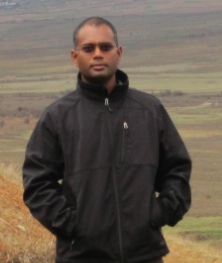 Raj Madhavan is with the Institute for Systems Research, and a member of the Maryland Robotics Center at the University of Maryland, College Park. Currently he is on leave working on applying robotics and automation technologies for the benefit of humanity in a variety of domains. His work focuses on the applied use of robotics and automation technologies for the benefit of under-served and under-developed communities by working closely with them to sustain developed solutions. This is made possible by bringing together researchers, practitioners from industry, academia, government, and various entities such as the IEEE Robotics Automation Society’s Special Interest Group on Humanitarian Technology (RAS-SIGHT), NGOs, NPOs and other organizations across the globe. He has held appointments with the National Institute of Standards and Technology (March 2002-June 2013) and the Oak Ridge National Laboratory (March 2001-January 2010). He received his Ph.D. in Field Robotics from the University of Sydney, and an ME (Research) in Systems Engineering from the Australian National University. Dr. Madhavan has been serving as the Vice President of the Industrial Activities Board (2013-2016), Chair of the Standing Committee for Standards Activities (2011-2016), and since Sept. 2012 as the Chair of the Special Interest Group on Humanitarian Technology (SIGHT), all within the IEEE Robotics and Automation Society. For more details, see http://www.isr.umd.edu/faculty/madhavan. He can be contacted via email at rajmadhavan.tech4humanity@gmail.com.
Raj Madhavan is with the Institute for Systems Research, and a member of the Maryland Robotics Center at the University of Maryland, College Park. Currently he is on leave working on applying robotics and automation technologies for the benefit of humanity in a variety of domains. His work focuses on the applied use of robotics and automation technologies for the benefit of under-served and under-developed communities by working closely with them to sustain developed solutions. This is made possible by bringing together researchers, practitioners from industry, academia, government, and various entities such as the IEEE Robotics Automation Society’s Special Interest Group on Humanitarian Technology (RAS-SIGHT), NGOs, NPOs and other organizations across the globe. He has held appointments with the National Institute of Standards and Technology (March 2002-June 2013) and the Oak Ridge National Laboratory (March 2001-January 2010). He received his Ph.D. in Field Robotics from the University of Sydney, and an ME (Research) in Systems Engineering from the Australian National University. Dr. Madhavan has been serving as the Vice President of the Industrial Activities Board (2013-2016), Chair of the Standing Committee for Standards Activities (2011-2016), and since Sept. 2012 as the Chair of the Special Interest Group on Humanitarian Technology (SIGHT), all within the IEEE Robotics and Automation Society. For more details, see http://www.isr.umd.edu/faculty/madhavan. He can be contacted via email at rajmadhavan.tech4humanity@gmail.com.
Ravindra Joshi
Chair, IEEE Delhi Section HTC
Title: Inculcating Mass Awareness on Environmental Issues
Abstract:
Sustainable development is not possible without sustainable energy. Nearly one person in five on the planet still lacks access to electricity. Twice that number, almost three billion people rely on wood, coal, charcoal or animal waste for cooking and heating. This is a major barrier to eradicating poverty and building shared prosperity. 1400 million across the world have no access to electricity. 300 million in India still live in dark. Electrical energy to bottom of pyramid segment of society is the need of hour. Solar is green form of energy and do not need long gestation period power generation plants needing land acquisition, fuel linkages, transmission lines to feed power etc. Thus it is the fastest way to light about 75 million homes in India and 350 million homes across the world that does not have any access to electricity. The children of these deprived homes can then study and move towards belonging to mainstream society.
The Environment Events make all including deprived section of society aware of solar lamps, appliances also.
A case study of few solar lamps installed in my guidance and control in a slum tells a good creative story. How children are studying, housewife is cooking in solar lamplight; women have safety even when there is no power. One of the best parts was participation of children in drawing environment theme paintings in these events and debating on environment.
Solar energy is a means of fastest way to reach the max dark homes is an idea whose time has come. Working in partnership, governments, parliamentarians, private sector companies, industries, and civil society can make diverse contributions inspired by a unity of purpose. Together, we can power a sustainable future free of poverty. Huge task, but we all have to work towards that. We also use Smart phone technology to spread fast best practices in this area. Awareness spreading for fastest results coupled with call to global contributors to come forward to participate in this journey to light 75 million homes in India and 350 million homes across the world.
Bio:
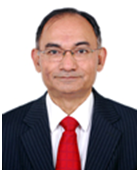 Ravindra Joshi has implemented large Automated Utility Projects and now is Head of Special Consumer Group in Tata Power Delhi Distribution Limited, responsible for distribution of power, reliability, billing and collection of 0.2 million Slum Consumers covering a population of 1 million and 510 square km area. We have to innovate ways to uplift their status in society and bring them in mainstream. As Chair, IEEE Delhi Section HTC partnering with UN organized several environment awareness, innovative idea generation, street play events with young and enthusiastic volunteers, in normal residential colonies, Malls and slums. The events covered about 0.2 million over last decade, including in slums. Being widely travelled across the world and having worked in Europe, SE Asia adds global perspective of human issues taken up in these drives.
Ravindra Joshi has implemented large Automated Utility Projects and now is Head of Special Consumer Group in Tata Power Delhi Distribution Limited, responsible for distribution of power, reliability, billing and collection of 0.2 million Slum Consumers covering a population of 1 million and 510 square km area. We have to innovate ways to uplift their status in society and bring them in mainstream. As Chair, IEEE Delhi Section HTC partnering with UN organized several environment awareness, innovative idea generation, street play events with young and enthusiastic volunteers, in normal residential colonies, Malls and slums. The events covered about 0.2 million over last decade, including in slums. Being widely travelled across the world and having worked in Europe, SE Asia adds global perspective of human issues taken up in these drives.
Joshi has Electrical Engineering degree from IIT, MBA from Lancaster University, UK. He is Joint Secretary, Chair-Human Technology Challenge Standing Committee of IEEE Delhi Section. He has 30 years of experience in corporate world in India, SE Asia and Europe. He is Auditor Tata Business Excellence Model, a quality initiative of Tata group and assessor for Tata Council for Community Initiative. Has been invited to National Innovation Forum at President of India Office. Regularly partnering with UN, has organized several environment awareness events, including for slum children.
Ray Larsen
Co-Chair of the IEEE Community Solutions Initiative (CSI), SLAC National Accelerator Laboratory, Stanford University
Title: The Humanitarian Technology Sustainability Challenge
Abstract:
In 2008, in collaboration with IEEE, UN and Vodafone Foundations, IEEE launched a 3-year pilot program called the Humanitarian Technology Challenge. The program succeeded in creating technology solutions for interconnectivity, medical records and reliable electricity; but sustainability as a market-based business model without constant infusion of charitable or grants funding remains the greatest challenge. The reliable electricity solution developed on the IEEE Community Solutions Initiative SunBlazer 1.5kW charging station now has sufficient field experience to demonstrate sustainable potential, but the real challenge is for each new seeded company must secure venture or loan capital for rapid growth to have the desired high impact on reducing global energy poverty. Meanwhile, continuing IEEE pro-bono professional assistance and up-front donated funding are needed to seed such initiatives, and very tight management and maintenance control is necessary for profitability on the thin income stream of kerosene and candles equivalent. Today a plethora of market based products are becoming available while new technologies continue to expand the range of viable options, which in application are heavily dependent on population density of energy-poor communities. Kerosene and candles replacement is only a beginning to generating the energy growth necessary for broad economic impact. This has also led to realization that achieving community prosperity depends on much more than the availability of modest amounts of electricity, but also on clean water, sanitation, communication, health care and, underpinning all long- term community self-sustainability, community based education[i]. All of these involve growing energy needs and potential sustainable business opportunities, which require future IEEE collaboration with a range of partners. In all cases, business models must demonstrate sustainability to attract the growth funding needed to have impact on the UN Millennium Development Goals to eliminate the worst of world poverty among 1.4 billion people by 2030. This talk will address these issues and the response of IEEE Community Solutions Initiative, now becoming an IEEE Foundation Signature Project.
[i] See GHTC 2014 Paper 315, “Learning beyond the Light Bulb” among Least Developed Countries based on a Sustainable PV Solar Utility Model, Saturday October 11, 2014.
Bio:
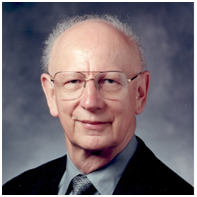 Ray Larsen is an IEEE NPSS Life Fellow, PES Member and Co-Chair of the IEEE Community Solutions Initiative (CSI) non-profit under sponsorship of the Power and energy and Nuclear and Plasma Sciences Societies. He is a former head of the Electronics Department and currently Special Projects Manager of the Instrumentation and Controls Division at the SLAC National Accelerator Laboratory, Stanford University, and a Past President of NPSS. He founded the IEEE Humanitarian Technology Challenge Community Solutions Working Group which in 2010 became CSI. He led the design and project team for the CSI SunBlazer project in Haiti which obtained IEEE funding to build a total of 15 charging stations which its business partner Sirona Haiti successfully deployed in 15 communities between June 2011 and August 2012. Ray secured the outstanding pro bono help of commercial partners Nextek and Russell Engineering which were critical along with the remarkable field development of Sirona Haiti. At the same time three new Africa partners were secured and continue to develop community electricity in Cameroon, Nigeria and South Sudan. In addition to seeding ten new startups per year with IEEE Foundation funding, the global vision has been expanded to include Community Based Online Curriculum (CBOC) courses with partners Regis University and Posner Center for International Development as a pillar of sustainable development moving forward.
Ray Larsen is an IEEE NPSS Life Fellow, PES Member and Co-Chair of the IEEE Community Solutions Initiative (CSI) non-profit under sponsorship of the Power and energy and Nuclear and Plasma Sciences Societies. He is a former head of the Electronics Department and currently Special Projects Manager of the Instrumentation and Controls Division at the SLAC National Accelerator Laboratory, Stanford University, and a Past President of NPSS. He founded the IEEE Humanitarian Technology Challenge Community Solutions Working Group which in 2010 became CSI. He led the design and project team for the CSI SunBlazer project in Haiti which obtained IEEE funding to build a total of 15 charging stations which its business partner Sirona Haiti successfully deployed in 15 communities between June 2011 and August 2012. Ray secured the outstanding pro bono help of commercial partners Nextek and Russell Engineering which were critical along with the remarkable field development of Sirona Haiti. At the same time three new Africa partners were secured and continue to develop community electricity in Cameroon, Nigeria and South Sudan. In addition to seeding ten new startups per year with IEEE Foundation funding, the global vision has been expanded to include Community Based Online Curriculum (CBOC) courses with partners Regis University and Posner Center for International Development as a pillar of sustainable development moving forward.
Ray holds degrees in Electrical Engineering from University of British Columbia (BASc-EE, MASc-EE with thesis) and Stanford University (Degree of Engineer-EE with thesis). He is co-holder of two patents in high speed analog sampling and digitizing chip technology and former President and CEO of a Silicon Valley startup to incorporate the technology into a commercial product line in partnership with a major instrument company investor.
J. Roberto de Marca
2014 IEEE President & CEO
Bio:
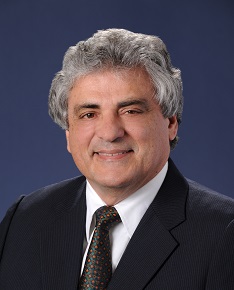 J. Roberto de Marca was a Fulbright Scholar at the University of Southern California, where he earned a Ph.D. in Electrical Engineering. He has been in the faculty of the Catholic University, Rio de Janeiro (PUC/Rio), since 1978 where he has held several leadership and administrative positions including Associate Academic Vice President for Sponsored Research. Twice on leave, Dr. de Marca served as Scientific Consultant with AT&T Bell Laboratories, Murray Hill. He has been a Visiting Professor at the Politecnico di Torino and more recently he was a Visiting Professor at the Hong Kong University of Science & Technology and a Guest Scientist at the NEC Europe Research Labs, Heidelberg, Germany.
J. Roberto de Marca was a Fulbright Scholar at the University of Southern California, where he earned a Ph.D. in Electrical Engineering. He has been in the faculty of the Catholic University, Rio de Janeiro (PUC/Rio), since 1978 where he has held several leadership and administrative positions including Associate Academic Vice President for Sponsored Research. Twice on leave, Dr. de Marca served as Scientific Consultant with AT&T Bell Laboratories, Murray Hill. He has been a Visiting Professor at the Politecnico di Torino and more recently he was a Visiting Professor at the Hong Kong University of Science & Technology and a Guest Scientist at the NEC Europe Research Labs, Heidelberg, Germany.
He was founding President of the Brazilian Telecommunications Society and in 1990, Prof. de Marca was appointed Scientific Director of the Brazilian National Research Council (CNPq) where he approved the initial funding of the national research network that opened the way for the widespread use of Internet in Brazil. He was a delegate to several ITU-R TG8/1 meetings, also chair of a working group on QoS, where the wireless 3G technology specifications were developed. From 2009 to 2011 he was a member of FINEP’s (the largest Brazilian R&D& Innovation funding agency) Presidential Advisory Board.
He is an IEEE Fellow and a full member of both the Brazilian Academy of Sciences and Brazilian National Academy of Engineering. Dr. de Marca was the 2000-2001 President of the IEEE Communications Society. In 2008 he held the office of IEEE Vice President of Technical Activities.
Scott J. Bornheimer
Staff Scientist, R&D, BD Biosciences
Title: Point of Care CD4 Testing for HIV/AIDS Patient Management: the BD FACSPresto™
Abstract:
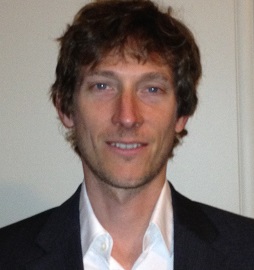 The BD FACSPresto™ Near-Patient CD4 Counter* measures absolute CD4+ cell counts, %CD4, and total hemoglobin (Hb) from a single drop of fingerstick or venipuncture blood for staging and monitoring HIV/AIDS patients. This system requires minimal training to operate and can process 10 tests per hour. Features include a user-friendly touchscreen, unitized dry reagent cartridge, onboard reagent and instrument QC, and automated data analysis. This talk will discuss the technology and performance of the BD FACSPresto system in testing HIV/AIDS patient samples.
The BD FACSPresto™ Near-Patient CD4 Counter* measures absolute CD4+ cell counts, %CD4, and total hemoglobin (Hb) from a single drop of fingerstick or venipuncture blood for staging and monitoring HIV/AIDS patients. This system requires minimal training to operate and can process 10 tests per hour. Features include a user-friendly touchscreen, unitized dry reagent cartridge, onboard reagent and instrument QC, and automated data analysis. This talk will discuss the technology and performance of the BD FACSPresto system in testing HIV/AIDS patient samples.
*Product under development, not available for sale or use
Bio:
Dr. Scott Bornheimer received a Ph.D. in Chemistry and Biochemistry from the University of California, San Diego focused on investigating heterotrimeric G-protein signaling through mathematical modeling, fluorescent biosensors, and live cell imaging. Since that time he has led a group in point of care diagnostics at BD Biosciences in development of the BD FACSPresto.
Steve Hipskind
Chief, Earth Science Division, NASA Ames Research Center
Title: How the View from Space Improves Life on Earth
Abstract:
NASA has been observing the Earth from space for over 40 years. It embarked on a very ambitious program of “Earth System Science” utilizing our unique perspective from space in the 1990’s with a program called the Earth Observing System or EOS. Many space faring nations have entered the Earth observation fray, indeed much of the focus of other space programs is on Earth observation. More recently there has been tremendous commercial interest in space-based Earth observation, especially here in Silicon Valley, with companies like Planet Labs and Skybox Imaging, the latter having just been purchased by our search friends to the north.
There is now an incredible wealth of observations of the Earth. The challenge is that turning these observations into actionable information is not trivial. NASA leads the world in making its Earth observation data publically available. Google Earth has completely changed the way people access and use geospatial data. I will talk about these and other efforts at NASA Ames to make important information about the Earth more readily accessible to a much broader community of users.
Bio:
 Steve Hipskind is the Chief of the Earth Science Division at NASA Ames Research Center. The division is primarily a research group working on global to local problems in Earth system science using NASA’s unique perspective from space. The Division focuses on atmospheric and ecosystem science and technology development. It is comprised of over 100 scientists, engineers and technical support personnel using observations from space and specialized aircraft. The division has a heritage of scientific discovery and application of NASA science and technology for societal benefit. Recent studies have focused on pollution transport into and out of North America, tropical cloud systems and climate impact on the water cycle as well as coastal ocean processes, including coral reefs and algal blooms. The division has led the nation in the use of Unmanned Aerial Systems (UAS) for Earth observations. It has a major collaborative effort with the NASA Advanced Supercomputing Division at Ames developing the NASA Earth Exchange (NEX), a unique, leading edge system to provide better access to NASA’s Earth observations, models and analytical tools.
Steve Hipskind is the Chief of the Earth Science Division at NASA Ames Research Center. The division is primarily a research group working on global to local problems in Earth system science using NASA’s unique perspective from space. The Division focuses on atmospheric and ecosystem science and technology development. It is comprised of over 100 scientists, engineers and technical support personnel using observations from space and specialized aircraft. The division has a heritage of scientific discovery and application of NASA science and technology for societal benefit. Recent studies have focused on pollution transport into and out of North America, tropical cloud systems and climate impact on the water cycle as well as coastal ocean processes, including coral reefs and algal blooms. The division has led the nation in the use of Unmanned Aerial Systems (UAS) for Earth observations. It has a major collaborative effort with the NASA Advanced Supercomputing Division at Ames developing the NASA Earth Exchange (NEX), a unique, leading edge system to provide better access to NASA’s Earth observations, models and analytical tools.
Mr. Hipskind began his career at the National Center for Atmospheric Research and then at Oregon State University before coming to NASA Ames. He has conducted research in stratosphere-troposphere exchange and led the early development of the Ames’ Earth Science Project Office into the premier NASA group for managing national and international airborne field campaigns. His field work has taken him from Punta Arenas, Chile on the Straits of Magellan to Kiruna, Sweden above the Arctic circle, and many latitudes and longitudes in between.
Tapan Parikh
Assistant Professor at the School of Information at the University of California, Berkeley
Title: Representation Technologies
Abstract:
Information technologies are essential tools for the representation and communication of human knowledge. However, many groups are still inadequately represented on the Internet. My research group developed Avaaj Otalo, a phone-based voice message board allowing small farmers in rural India to ask, answer and browse agricultural questions and answers. Avaaj Otalo has been deployed for over four years, and receives hundreds of calls every week. I report on recent results from this deployment, including evidence of impact on farmer decision-making, reducing the use of less effective and potentially harmful pesticides, through a randomized controlled trial (RCT). While Avaaj Otalo illustrates the importance of designing appropriate user interfaces for representing knowledge from underrepresented groups, knowledge must still be translated to structured, quantitative forms for aggregation and policy decision-making. Local Ground is a data collection, mapping and information visualization tool that helps
youth develop data skills by making connections between different representations of empirical phenomena. Students begin by collecting open-ended qualitative data, in the form of free-hand drawings, pictures and audio interviews. Based on these observations, students can design of structured data collection instruments for more systematic inquiry and analysis. These various forms of data are
combined into narratives that can articulate youth perspectives to a variety of stakeholders. Local Ground has been used to involve youth the planning of a public park, ground-truth civic data about food access, and document air quality issues across the BART transportation system. Within these projects, I explore several themes in my work, including the design of more accessible interaction techniques allowing new populations to author content, the importance of bottom-up data for planning and valuating development projects, and how we can employ participatory computing technologies to improve learning and human agency.
Bio:
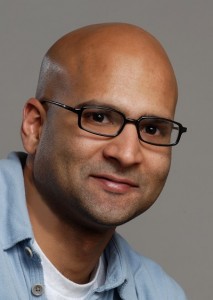 Tapan Parikh is an Assistant Professor at the School of Information at the University of California, Berkeley. Tapan’s research interests include human-computer interaction (HCI), mobile computing, paper and voice UIs and information technologies for education, governance and international development. Tapan and his students have started several technology companies serving community-based organizations (CBOs), non-governmental organizations (NGOs), governments and non-profits. He holds a Sc.B. degree in Molecular Modeling with Honors from Brown University, and M.S. and Ph.D. degrees in Computer Science from the University of Washington, where his dissertation won the William Chan Memorial award. Tapan has also received the NSF CAREER award, a Sloan Fellowship, was named TR35 Humanitarian of the Year, and has won several best paper awards for his group’s work.
Tapan Parikh is an Assistant Professor at the School of Information at the University of California, Berkeley. Tapan’s research interests include human-computer interaction (HCI), mobile computing, paper and voice UIs and information technologies for education, governance and international development. Tapan and his students have started several technology companies serving community-based organizations (CBOs), non-governmental organizations (NGOs), governments and non-profits. He holds a Sc.B. degree in Molecular Modeling with Honors from Brown University, and M.S. and Ph.D. degrees in Computer Science from the University of Washington, where his dissertation won the William Chan Memorial award. Tapan has also received the NSF CAREER award, a Sloan Fellowship, was named TR35 Humanitarian of the Year, and has won several best paper awards for his group’s work.
Vineeth Vijayaraghavan
Director – Research & Outreach, Solarillion Foundation
Title: Role of Rural Microgrids in Alleviating Energy Poverty
Abstract:
Energy poverty has been a critical challenge in India since independence and various approaches have been adopted in addressing the same. The challenge is still large and the social and cultural context is evolving.
The population without access to energy is still large and close to 400 million people in India alone, according to some estimates.
The earliest solutions involved providing portable solar lighting. While this was widely accepted and solved an important challenge albeit in a limited way, some of the original beneficiaries and communities are now looking for solutions that address energy needs and where lighting alone does not suffice as being adequate.
With the progress of rapid electrification of villages, the expectation of a “grid type” energy solution has also become the norm in among the target population.
In these circumstances, with the rapidly declining costs of solar and the adaptation of technology, rural microgrids presents a unique opportunity similar to what mobile telecom offered a decade ago. The talk will go into the details of this in the Indian context and outline the developments, opportunities and challenges from various stakeholder perspectives.
Bio:
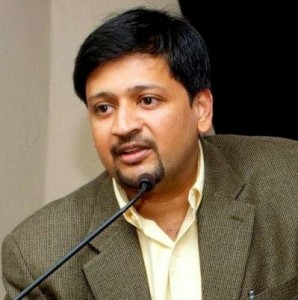 Vineeth Vijayaraghavan is the Director (Research and Outreach) at Solarillion Foundation, a non-profit research and outreach foundation working on research, outreach and implementation of sustainable energy and engineering solutions for emerging markets.
Vineeth Vijayaraghavan is the Director (Research and Outreach) at Solarillion Foundation, a non-profit research and outreach foundation working on research, outreach and implementation of sustainable energy and engineering solutions for emerging markets.
A thought leader in the space in India, he has been speaking and moderating industry and stakeholder panel discussions on subjects ranging from renewable energy financing, projects and its viability in the Indian context and often assisting stake holders with critical inputs in shaping policies relating to renewable energy, specifically solar, wind and bio energy in India. He is also actively involved in sustainable initiatives, energy security and next generation energy efficiency and management solutions including smart grid, rural micro grid and distributed generation solutions.
He was nominated from India for the BRIC Clean Energy and Exchange program, a Department of State Exchange Program, where he travelled to the US in 2011 and had numerous meetings with stakeholders in the US including senators, policymakers, congressmen and other officials, in October 2011
Vineeth holds a Master of Science degree in Electrical Engineering from The Ohio State University, Columbus, Ohio and a bachelor’s degree in Engineering in Electronics and Communications from the University of Madras.Vineeth Vijayaraghavan is the Director (Research and Outreach) at Solarillion Foundation, a non-profit research and outreach foundation working on research, outreach and implementation of sustainable energy and engineering solutions for emerging markets.
Yasunori Kimura
CEO, Fujitsu Laboratories of America
Title: Human-centric Health: Empowering People with 24/7 Personalized Monitoring
Bio:
 Mr. Kimura joined Fujitsu Limited in 1981. Throughout his career, he has been engaged primarily in computer system design and development. Some of the projects he contributed to include: the development of a compiler for parallel inference machines used on the Japanese fifth generation computer system, energy efficient server systems, and supercomputers. He spent a summer at Stanford University as a visiting scholar in 1995, and served as a visiting professor at the University of Tokyo for four years from 2002.
Mr. Kimura joined Fujitsu Limited in 1981. Throughout his career, he has been engaged primarily in computer system design and development. Some of the projects he contributed to include: the development of a compiler for parallel inference machines used on the Japanese fifth generation computer system, energy efficient server systems, and supercomputers. He spent a summer at Stanford University as a visiting scholar in 1995, and served as a visiting professor at the University of Tokyo for four years from 2002.
Mr. Kimura transferred to Fujitsu Laboratories of America in November, 2009, and in 2011, was appointed as president & CEO.
Mr. Kimura’s personal interests include reading and walking, and wine tasting is his new hobby since he came to California.
10/03/2014 11:25 AM





